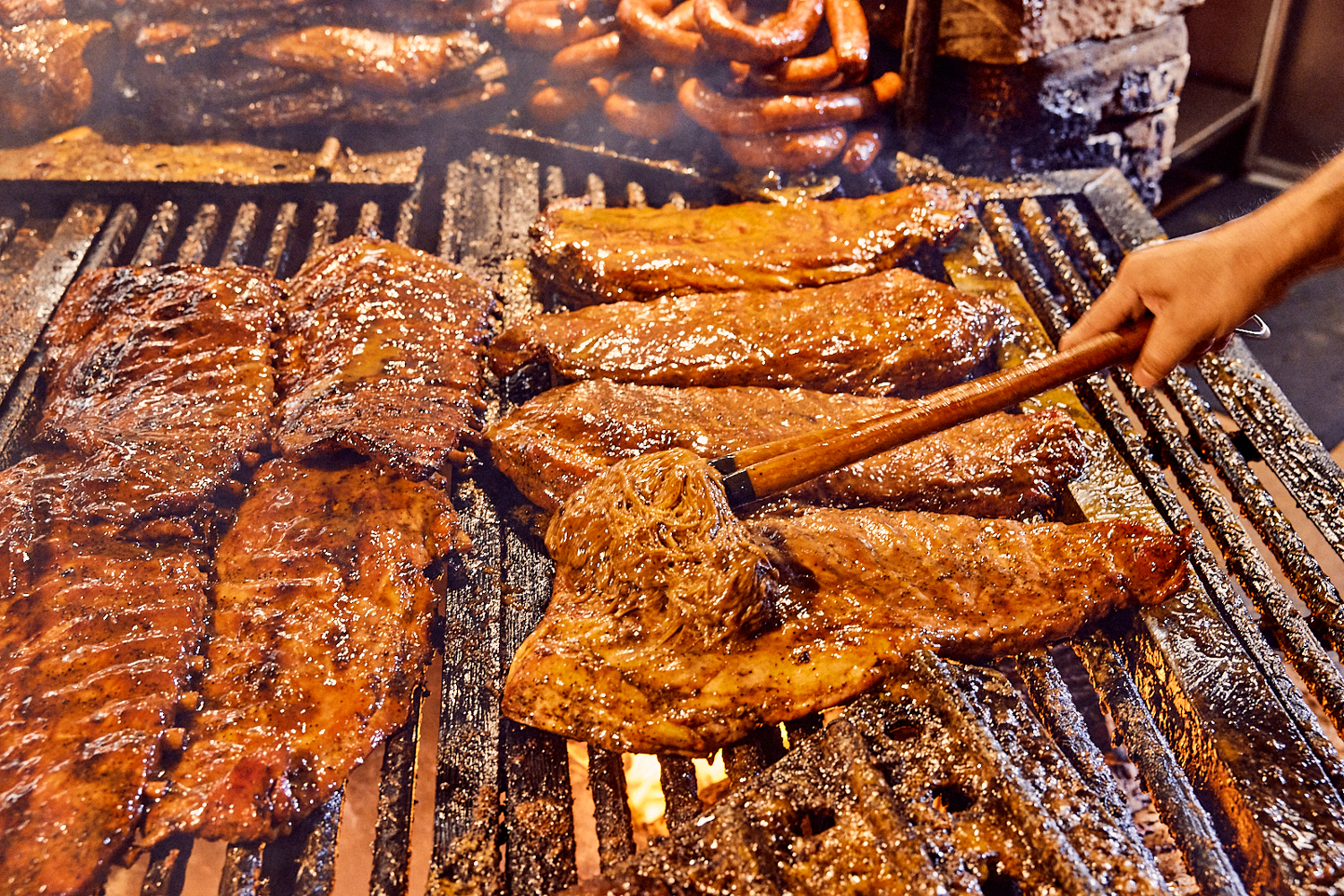
There’s nothing quite like good, slow-cooked brisket. Admittedly, the iconic BBQ dish is not the easiest thing to make. Great brisket requires patience and technique but is always worth the effort.
The resulting meat is truly special, an idyllic combination of rich and savory notes and tremendous texture. Many of them enjoyed the dish at great BBQ joints or at that one neighbor’s house (you know, the one always making great grilled goods). Turns out, you can make some pro-level brisket at home, especially if you follow the advice of somebody in the know.
Scott Roberts is the owner of The Salt Lick BBQ in Austin. He’s also a cookbook author and part of a long lineage of BBQ-ers. with his ancestors working with brisket as far back as the 1870s, Roberts knows a lot about slow-cooking proteins. The seasoned pro offered some insights on making top-notch brisket, as well as some general grilling advice just in time for BBQ season.
Sage brisket advice

There’s no underrating sauce when it comes to brisket, and Roberts has an approach. “Put it on at the beginning to caramelize the outside of the meat and to sear it, and then move the meat over to indirect heat into the smoke column,” he says. “If you baste it over there, the sauce will act as a moisture barrier on the outside of the meat.”
He begins by putting a thin layer of sauce on the meat, allowing the radiant heat of the fire to add some caramelization magic, “and the juices drip down and hit the coals, which adds in some of that grill smoke flavor,” he adds.
Here are a few key tips for making great brisket:
Burn live oak
Roberts advises the use of live oak as it produces better flavor than mesquite (although read on for his favorite BBQ wood). We’re not going to argue with a guy who’s devoted his life to making the best brisket.
Go with vinegar
Tomatoes in sauce do not work, as Roberts says they’re too bitter. He goes with his family’s tried-and-true vinegar-based recipe, which incorporates mustard and sugar. Even in-season tomatoes can add off-notes to a sauce.
Watch that sauce
Roberts watches his sauce like a hawk, and you should, too. He likes to use a pastry brush to apply sauce in small amounts and then keep a close eye on it so that it does not burn.
Don’t wrap brisket in foil
Wrapping in foil, a surprisingly common approach steams the meat and can dry it out instead of establishing what you really want: a nice caramelized crust.
Share
This one goes without saying, but it’s a nice reminder of the communal power of food. Scott says that BBQ brings people together. “You need all your friends and family to help enjoy the process–and the end result,” he says.
Additional tips

Live oak is great for creating flames and flavor, but there’s another great option too. “Actually, pecan is the best for cooking BBQ,” he says. “It imparts a delicious smoke flavor without being too smoky. It allows you to taste the smoke and the meat better than any other wood. The problem is the supply is not as large as other woods. If you’re unable to find pecan wood, soak pecan hulls in water and put them on the wood you’re using. They will smolder like hickory chips and add pecan flavor to the BBQ.”
As for tools, there’s one thing Roberts believes any good backyard chef should have. “Everyone should have a large pair of heavy-duty tongs,” he says. “It allows you to turn the meats without poking holes, allowing juices to escape.”
Mistakes are made in the BBQ game, too, and one Roberts sees a lot of involves meat prep. He says not basting the meat is a mistake and even if you do, basting with tomato is another mistake. “The problem with the tomatoes is they will burn and become bitter in the cooking process,” he says. “You want to use a sauce that will caramelize during the cooking process.”
No BBQ meal is complete without sides. When eating brisket, Roberts has a few favorites. “Potato salad or french fries, cole slaw that has no mayonnaise and simply prepared beans,” he says. In terms of pairing it all up with a drink, his go-to is a little unexpected.
“Brace Yourself; the best is Pinot Noir,” he says. You want something light and not too acidic, something that will compliment the meat and smoke—not overpower it.”
Now get out there and get your grill on. Check out a few related pieces, like our feature on how to smoke brisket and Mexican BBQ guide.


